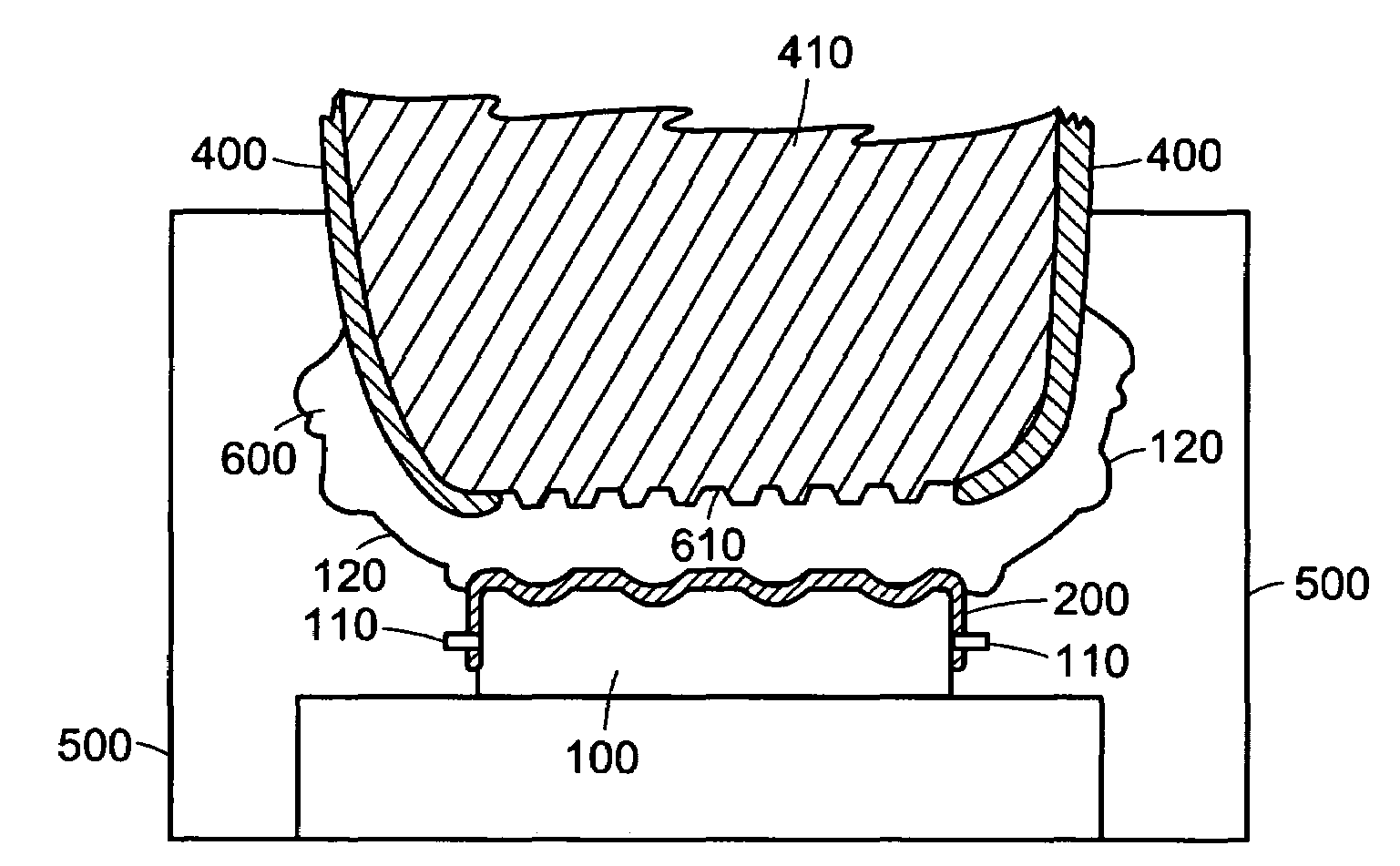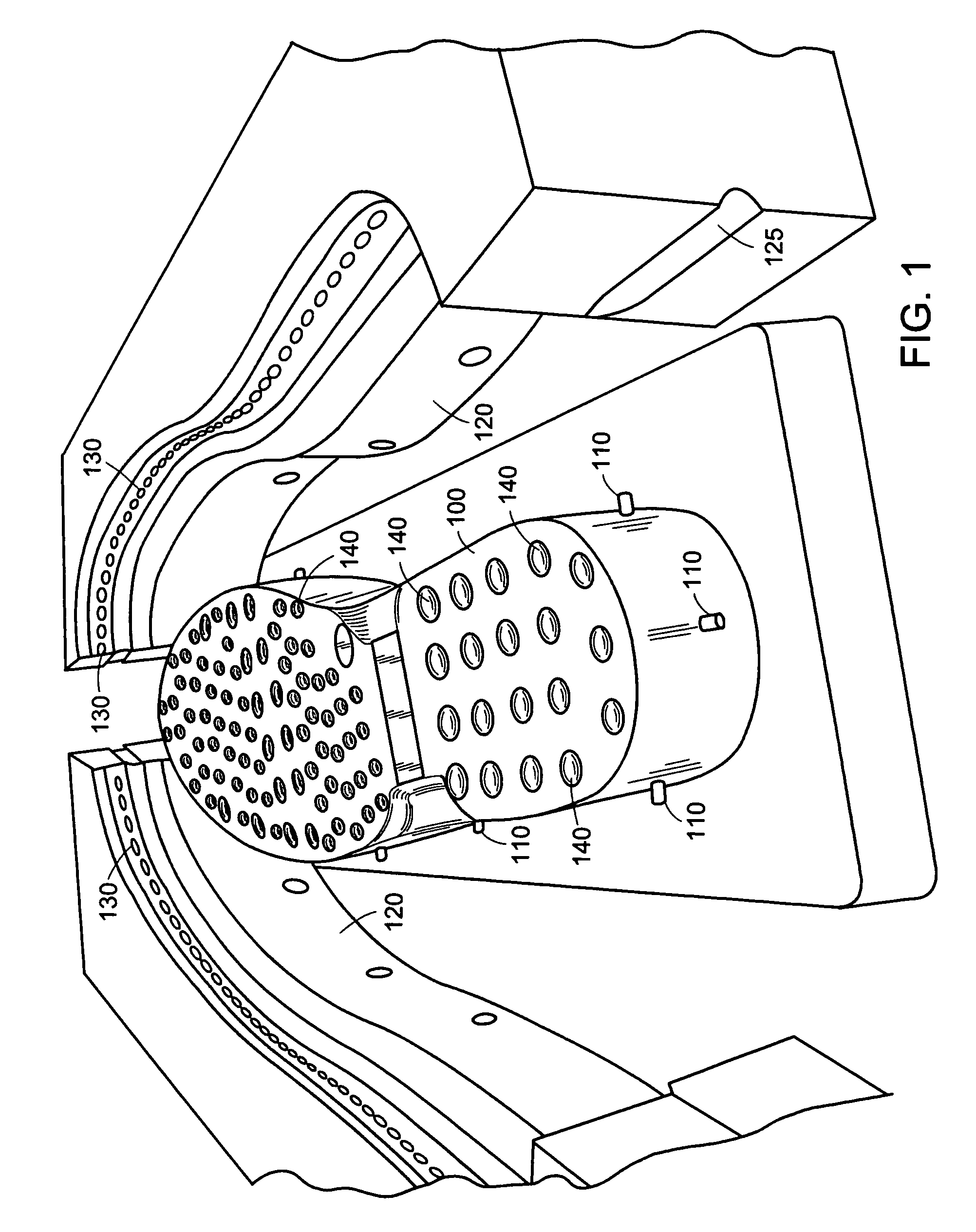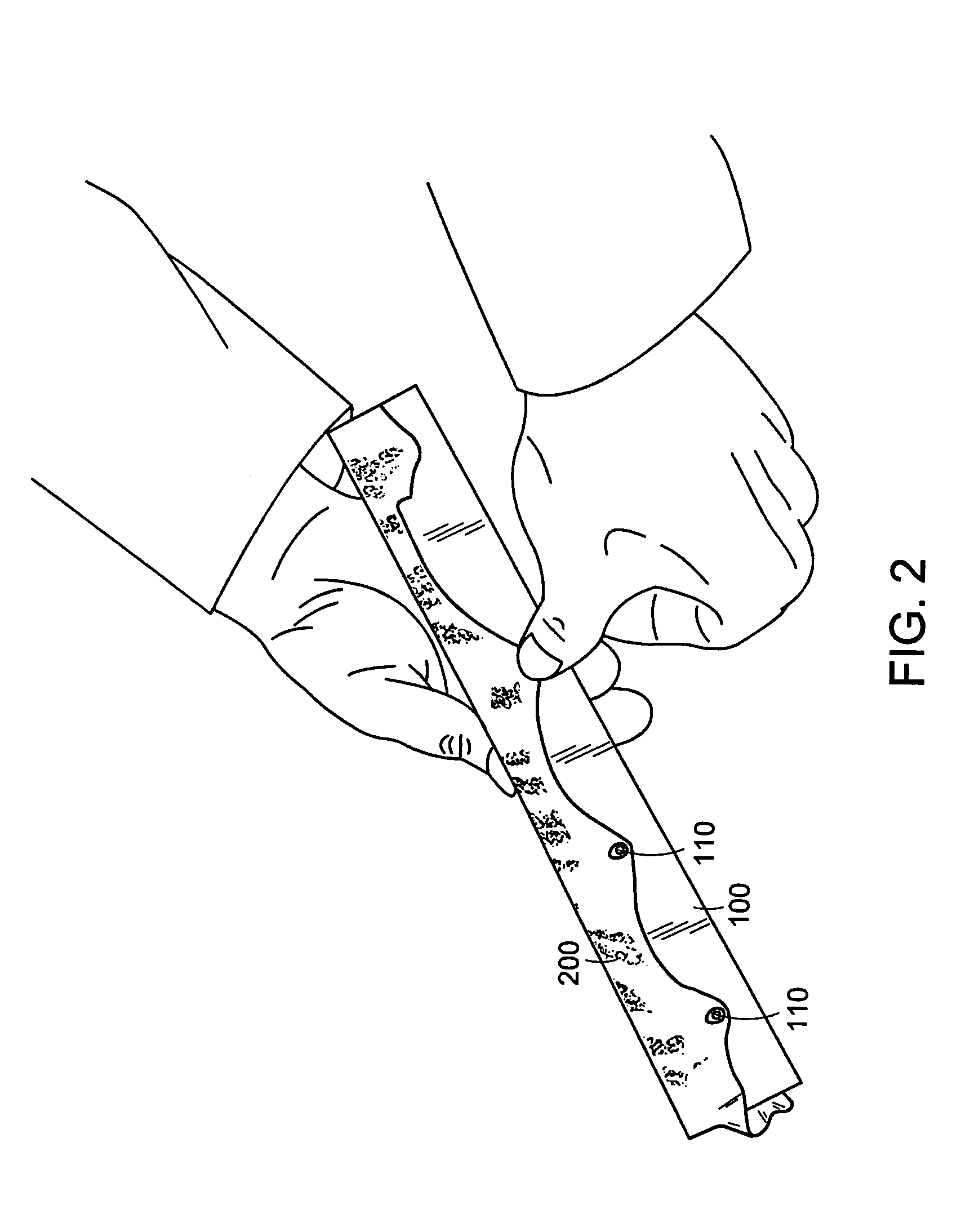Injection-molded footwear having a textile-layered outer sole
a technology of textile layering and injection molding, which is applied in the field of injection molding of footwear having a textile layering outer sole, can solve the problems of affecting many aspects of footwear, time-consuming and costly methods of footwear fabrication, and durability and cost of manufacture, so as to achieve more flexibility, less flex, and more durable
- Summary
- Abstract
- Description
- Claims
- Application Information
AI Technical Summary
Benefits of technology
Problems solved by technology
Method used
Image
Examples
Embodiment Construction
[0038]The present invention is a manufacturing process and apparatus for the production of textile-soled injection-molded footwear, such as, but not limited to, slippers, as well as articles of footwear made thereby. The invention provides for fabrication of the entire footwear outer shell in a single injection molding step, simultaneously moldably attaching both the upper and the ground-contacting textile layer to the molded outsole layer. The process is used to produce a textile-soled footwear article wherein the textile layer is moldably and integrally attached, in a common mold, to the molded outsole as the outsole is being created during the injection process.
[0039]As discussed above, a problem has been the provision of a process whereby a textile layer could be moldably attached to the ground-contacting side of an outsole at the same time as the upper. The present invention solves this problem. Being able to perform these two parts of the footwear fabrication process at the sa...
PUM
| Property | Measurement | Unit |
|---|---|---|
| Moldable | aaaaa | aaaaa |
Abstract
Description
Claims
Application Information
 Login to View More
Login to View More - R&D
- Intellectual Property
- Life Sciences
- Materials
- Tech Scout
- Unparalleled Data Quality
- Higher Quality Content
- 60% Fewer Hallucinations
Browse by: Latest US Patents, China's latest patents, Technical Efficacy Thesaurus, Application Domain, Technology Topic, Popular Technical Reports.
© 2025 PatSnap. All rights reserved.Legal|Privacy policy|Modern Slavery Act Transparency Statement|Sitemap|About US| Contact US: help@patsnap.com



